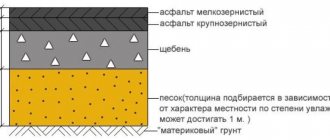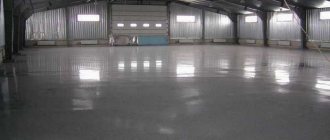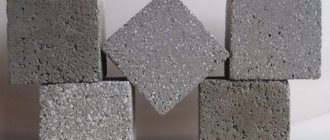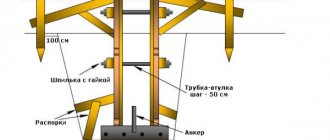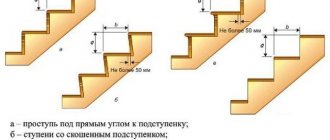The important properties of asphalt concrete solutions are considered to be homogeneity, how easily the material flows when laid, and durability (warranty period is 5 years). The quality of asphalt concrete is regulated by the rationality of processes and materials with minimal costs and costs. The solution is prepared with heated mineral raw materials of different fractions with the addition of petroleum road bitumen in the required proportions. Polymers and milled screenings are also added to the mixture.
reference Information
Documents • Laws • Notices • Document approvals • Contracts • Requests for proposals • Technical specifications • Development plans • Document management • Analytics • Events • Competitions • Results • City administrations • Orders • Contracts • Work execution • Protocols for consideration of applications • Auctions • Projects • Protocols • Budgetary organizations Municipalities • Districts • Education • Programs Reports
: • by references • Documentary base • Securities
Regulations
: • Financial documents
Resolutions
: • Categories by topic • Finance • cities of the Russian Federation • regions • by exact dates Regulations
Terms
: • Scientific terminology • Financial • Economic
Time
: • Dates • 2015 • 2016 Documents in the financial sector • in the investment sector • Financial documents - programs
Characteristics of high-quality asphalt concrete
According to GOST 9128-84, for quality control, tests of manufactured products are carried out within one day, namely, the temperature of the finished mixture, the amount of bitumen and grain composition, porosity, liquid saturation, water resistance and compressive strength at various temperatures (50 ° C) are checked. , 20 °C and 0 °C), evenness of the asphalt concrete pavement. Asphalt concrete production plants also evaluate the color, homogeneity and uniformity of the bitumen component.
A poorly dried mineral composition affects the mobility of the solution, and a large amount of bitumen increases the looseness. A mixture with such a composition cakes during transportation, spreads in a dump truck, and also makes it difficult to accept the mixture and is difficult to unload.
Education and science
Science
: Tests • Scientific and technological progress • Pedagogy • Work programs • Faculties • Methodological recommendations • School • Vocational education • Student motivation
Subjects
: Biology • Geography • Geology • History • Literature • Literary genres • Literary characters • Mathematics • Medicine • Music • Law • Housing Law • Land Law • Criminal Law • Codes • Psychology (Logic) • Russian Language • Sociology • Physics • Philology • Philosophy • Chemistry • Jurisprudence
How to check the quality of asphalt paving work
When constructing a road or resurfacing a road, it is the contractor's responsibility to know how to check the quality of the asphalt paving job. This is usually done by the technical control department of the contractor organization; it conducts several types of checks at different stages of the work.
- Incoming inspection - carried out before the start of construction or repairs.
- Operational control - the process of arranging the asphalt layer is under supervision.
- Control of the finished pavement is a final check of the technical parameters of the finished road section.
Methods for determining the quality of an asphalt concrete layer include visual inspection, a number of measurements using special instruments, and examination of asphalt mixture samples in laboratory conditions.
Business and finance
Business
: • Banks • Wealth and prosperity • Corruption • (Crime) • Marketing • Management • Investments • Securities: • Management • Open Joint Stock Companies • Projects • Documents • Securities - control • Securities - valuations • Bonds • Debts • Currency • Real estate • (Rent) • Professions • Work • Trade • Services • Finance • Insurance • Budget • Financial services • Loans • Companies • State enterprises • Economics • Macroeconomics • Microeconomics • Taxes • Audit Industry
:
• Metallurgy • Oil • Agriculture • Energy
Construction
• Architecture • Interior • Floors and ceilings • Construction process • Building materials • Thermal insulation • Exterior • Organization and production management
Photo blogs
Art
• Children's creativity • Paintings • Art • Congratulations • Film review • Musical world • Russian rock
World
• People of the world • The world around us • My homeland is the USSR • Nature Channel • Stones and minerals • Cooking, food • Construction and architecture • Under construction • Transport • Weapons • Military transport
beauty
• Fashion Pandia.ru • Girls and Girls
School
• Tests for the Unified State Exam • Solver books • Unified State Examination • 10th and 11th grades • Various textbooks • 4th grade • Russian language grades 5-9 • 5th grade • 6th grade • 7th grade • 8th grade
Wisdom
• Cliparts • Quotes
Author Directory (private accounts)
AutoAuto service • Auto parts • Products for auto • Auto repair centers • Auto accessories • auto parts for foreign cars • Body repair • Auto repair and maintenance • Car chassis repair • Auto chemicals • oils • technical centers • Gasoline engine repair • auto electrical repair • Automatic transmission repair • Tire fitting BusinessAutomation of business processes • Online stores • Construction • Telephone communications • Wholesale companies LeisureLeisure • Entertainment • Creativity • Catering • Restaurants • Bars • Cafes • Coffee shops • Night clubs • Literature TechnologiesAutomation of production processes • Internet • Internet providers • Communications • Information technologies • IT companies • WEB studios • Website promotion • Software sales • Switching equipment • IP telephony | InfrastructureCity • Authority • District administrations • Courts • Utilities • Teen clubs • Public organizations • City information sites The sciencePedagogy • Education • Schools • Training • Teachers GoodsTrading companies • Trade and service companies • Mobile phones • Accessories for mobile phones • Navigation equipment |
Sampling of asphalt concrete
Sampling of asphalt concrete is done using a drilling rig, which drills samples from the finished product.
To determine the quality of the finished product, they rely on the requirements of GOST 12801-84. Sampling is done using a pneumatic hammer or drilling rig, drilling or cutting out part of the product. Knead the raw materials for about 3-6 minutes. The finished mixture should completely cover the surface, the mineral composition should be astringent without lumps. Next comes molding and compaction. Before the study, a sampling report must be drawn up. Depending on the type of asphalt concrete mixture (cold, hot, warm), the temperature is checked. Compaction for caking of the selected cold sample is carried out under a pressure of 0.5 MPa. Testing of asphalt concrete samples is carried out immediately after preparing the solution.
Testing of asphalt concrete pavement is carried out for strength, water saturation and swelling using 2 methods:
- Pressing under pressure of 40 MPa. This method is chosen if the percentage of crushed stone is less than 35%.
- Vibrating and pressing with a pressure of 20 MPa. Compaction in this way is achieved when the amount of crushed stone is more than 35 percent.
What should high-quality asphalt be like?
The first stage of creating asphalt concrete is preparing the mixture. The quality of the material depends on the correct proportions, special recipes, preparation and laying technologies. The production of mixtures is carried out by certified enterprises, where each stage of preparation is monitored and recorded. The next stage is laying asphalt. If the road work company transported the material incorrectly (at the wrong temperature), the quality will deteriorate.
High quality asphalt:
- minimal springiness;
- the markings are not erased and are easy to apply;
- durable and reliable;
- has water-repellent properties;
- evenness of asphalt concrete pavement;
- has a certificate of quality and warranty from the manufacturer.
Return to contents
Operational control stage
Operational control is carried out during the asphalting or restoration of a road section. Several indicators are checked:
- quality of excavation restoration;
- the condition of the lower layers on which asphalt will be laid;
- temperature of the asphalt concrete mixture;
- thickness, width, evenness of the asphalt layer;
- installation of side stones, storm drains, hatches;
- compliance with the project.
The placement and distribution of the heated asphalt concrete mixture over the base is also controlled. The temperature of the mixture is measured in each arriving vehicle; it must comply with accepted standards. The material must be evenly distributed over the entire area of the site under construction.
Methods for assessing the quality of concrete
The asphalt analyzer is designed to determine the bitumen content in asphalt concrete.
Modern assessment of concrete quality can be carried out outside laboratory conditions (previously this was not possible). Quality control is carried out by special portable devices - density meters. The technology determines the level of coating density, level of load resistance and water saturation right on site.
The laboratory is still a popular method for quality testing. Here they can give more detailed information about all possible factors and properties. Testing asphalt concrete takes several days. Several asphalt samples are taken for analysis. The samples are then subjected to various impacts to test the quality and durability of the material.
Return to contents
Determination of composition
Before laying the roadway, the composition is designed in accordance with operating standards. Design helps to determine in advance the future properties of concrete and change them in accordance with the desired functions. First of all, when checking the composition, they look at the ratio of bitumen and minerals. Their ratio affects the uniformity of the material and, accordingly, the quality. Samples are tested and verified in a laboratory.
The composition is determined in asphalt analyzers (they were developed in Europe). The process lasts no more than an hour. Concrete is divided into its component parts:
- stone;
- mineral;
- bitumen.
Bitumen and solid materials are not destroyed and are subject to further research. Testing of sand and stone masses is carried out. The decomposition temperature is 80 °C.
Return to contents
Assessment of stability in rutting
Rutting test setup.
Each country has GOST standards for regulating the resistance of concrete solutions to shear and destruction. There is a forecasting method (used for quite a long time in Europe and America). In this way, you can evaluate the track that is pushed through by the wheel.
The device used for forecasting is a sector compactor. With its help, you can prepare a concrete mixture that will be as similar as possible to the one used for road surfaces. The resulting samples are immersed in the compactor installation. It simulates mechanical damage to the material. After the experiment, special rutting graphs are modeled, which take into account:
- depth of depressions;
- approximate operating conditions;
- deadlines for the use of the roadway;
- quality and resistance to deformation of asphalt concrete.
Return to contents
Tests at subzero temperatures
Low temperatures change the viscosity characteristics of asphalt concrete. Essentially, the properties of the asphalt mixture change. The composition becomes more fragile, cannot withstand dynamic stress, and becomes less stable. A beam is made from the ready-made mixture, which is placed in special climatic chambers (temperature differences up to -40°C).
Tests carried out in climate chambers:
- The temperature is reduced to approximately -40°C. The samples, which are placed in the chamber, are pulled to the point of destruction.
- The temperature is gradually lowered, but no action is taken on the beam. Stress appears in the beam, it is monitored and studied. After series of temperature decreases, the beam collapses completely.
- They begin to load the beam with special materials, then suddenly remove the load. Calculate the time of tension and relaxation of the material.
- A constant temperature is set at which the material is stretched with progressive intensity. Concrete deformation is measured and possible load parameters are recorded. As a result, we obtain the values of elasticity and viscosity of asphalt.
Such testing systems are rapidly gaining popularity. Manufacturers are developing newer and better equipment to conquer the market.
Return to contents
Dynamic testing of asphalt concrete
Testing of asphalt concrete is needed in order to evaluate a certain list of concrete properties. The material is used to form a beam or cylinder. Samples are placed in special equipment. During tests, the load regime changes, the pressure increases or decreases, etc. After testing, a number of characteristics are established:
- rigidity;
- resistance to mechanical damage;
- terms of use;
- water saturation.
The equipment that conducts the tests creates individual programs for each client. You set the parameters you want to know and create a research program especially for you
Return to contents
Reception of finished material
After a series of checks, asphalt concrete must be accepted for further use. How acceptance occurs:
- after taking the necessary samples, control measurements are taken;
- special selection is carried out through additional tests;
- designs are accepted before the surfaces become rubbed.
In order to certify the quality of the received material, a special document is drawn up - a materials testing report. Acceptance of the material is presented to the working commission. Documents, an archive of tests and the results obtained are provided. If the working commission agrees on the use of the material, acceptance is successful and the material is sent for production. Along with the material, recommendations regarding the future functions of concrete are sent to production:
- correct use;
- water saturation of asphalt concrete;
- sending samples (for clarity);
- what kind of molding is needed for this material;
- selection of products recommended for use;
- guarantees;
- materials testing report (for confirmation).
Return to contents
Checking the finished asphalt concrete layer
A study of the finished pavement is carried out upon delivery of a constructed or repaired road. During the process, the following parameters are checked:
- width and thickness of asphalt concrete;
- coating properties, compaction coefficient;
- quality of adhesion of layers, adhesion properties;
- smoothness, slopes of the road;
- asphalt roughness.
To check the properties and quality of asphalt concrete, several pavement samples are taken a few days after the start of traffic on the delivered section of the road.
The width and thickness of asphalt are measured using special tools - a ruler, a metal probe of the required length, a tape measure, a curvimeter. Road slopes are determined using levels, levels and slats.
All checks during construction and repair work must be carried out in accordance with the finished project designs of the facility, as well as in accordance with current technical standards. If defects in the finished pavement are identified, recommendations are made for their elimination, then a new inspection of the constructed road is carried out.
